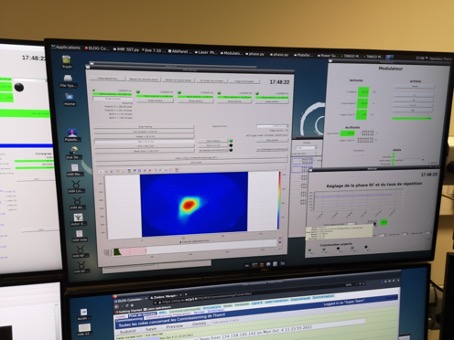
The increasing power of lasers allows the development of high power photon sources based on Compton backscattering. Thanks to this approach, X-rays of a few tens of keV can be produced using laser pulses which strike packets of electrons accelerated to a few tens of MeV. This process makes it possible to design compact sources (installations of approximately 100 m2) which provide beams of high intensity, high luminosity (between laboratory X-tubes and synchrotron sources) and energy-tunable in the 20-100 keV range. With such devices, ambitious experimental methods reserved today for synchrotron installations can become accessible to a laboratory, a museum or a hospital.
Among the high flux Compton source projects under development around the world, the ThomX project is particularly advanced. The nominal characteristics of the X beam will be sufficient to perform a wide range of experiments in various fields (biomedical, preservation of cultural heritage, materials sciences...). ThomX involves seven partners (Soleil, lnstitut Néel, Inserm, ESRF, LAMS, CELIA, Thalès). The source includes a photoinjector and a linear accelerator that injects a 50 MeV electron beam into a small storage ring. The interaction between the electron beam and a laser amplified by a Fabry-Perot cavity located on the ring generates each turn a 45 keV X-ray pulse directed to the experimental area.
A first electron beam was obtained in October 2021, going from 5 MeV at the exit of the photo-injector, to 50 MeV at the exit of the linear accelerator. It’s a promising start, long overdue in the accelerator community. Optimization of the beam is currently continuing for the injection of electrons into the ring in 2022, with in parallel the activation of the Fabry-Perot cavity in order to store sufficient laser power to produce a first beam of X-rays in 2023.





